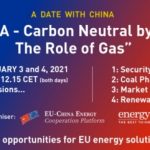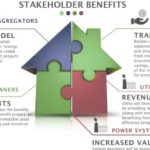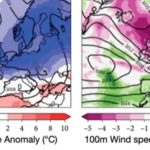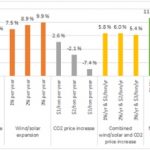Hydropower plants are big and expensive. And no two plants are the same, located in different geographies. That makes it very hard to customise and test their design. Contrast that with other clean energy technologies like wind and solar, which are much easier to model, perfect, modularise and then deploy. As Caitlin McDermott-Murphy at NREL explains, it’s why researchers there are creating a hydropower plant emulator that tests designs and how … [Read more...]
HBr Flow Batteries: long term storage for grids, compatible with hydrogen
The growth of intermittent wind and solar and the search for replacements for coal and gas points at storage solutions that can ensure a reliable supply of electricity at all times. Standard lithium-ion batteries have limitations. Put simply, the future demand for batteries (including for transport) is expected to far outstrip the supply of lithium. But hydrogen and bromine are abundantly available on a global scale. Helena Uhde and Veronika … [Read more...]
New research shows Wind turbines, configured right, could provide grid stability
Research at NREL, in collaboration with GE, has led to a demonstration of common wind turbines in “grid-forming mode”. They managed to set the grid voltage and frequency, operating without power from the wider electric grid. It opens the door to reducing reliance on conventional sources of stability like coal or gas generators. The well-known weakness of wind is its variability and therefore its need to be supported by traditional baseload … [Read more...]
“The Role of Gas” in Europe and China: EVENT VIDEO on security of supply, gas to power, competitive markets & renewable gases
We present the videos of the second of our three, 4-session workshops on the opportunities for European energy solutions providers to take part in China's energy transition. In this workshop, held in February, we looked at gas. Demand in China is expected to keep growing. That’s because China doesn’t just need to replace coal, it simply needs more energy. Europe’s gas sector has decades of relevant experience, technology, policy, planning and … [Read more...]
Policy-makers still undervalue Energy Efficiency as a grid resource
Supply-side solutions to grid stability are few in number, and expensive. More baseload generation, electricity networks, capacity markets that pay power plants all year round to be available for dispatch during a few peak hours. Demand-side solutions are usually smaller, and multitudinous: building fabric improvements, equipment upgrades, customer behaviour interventions, and more. So, for grid stability, the principle of “Efficiency First” - … [Read more...]
Optimising Wind and Solar needs new ways of weather forecasting
Weather forecasters are used to – and very good at – predicting large-scale weather patterns and then inferring what the actual surface weather conditions will be, based on a database of past events. Hannah Bloomfield at the University of Reading explains how the creation of a database of site-specific wind and solar generation, as well as grid demand, can be used in the same way to more accurately predict the impact of the weather on these … [Read more...]
Wind Farm “wake steering”: small re-alignments of turbines can increase output by 40%
The wake from one wind turbine makes the turbines behind it less efficient. It’s similar to the way a speedboat is slowed by the choppy water caused by the boat in front. Vincent Xia reports on how scientists at Stanford University have been testing ways of fine-tuning the alignment of turbine arrays to reduce turbulence and increase output. The biggest wins (a 47% increase) are at low wind speeds, when turbines can otherwise stop altogether. At … [Read more...]
New “Gas for Climate” scenarios: can green gas and hydrogen save gas pipelines?
Gas has a key role to play in decarbonising the energy sector. Until a comprehensive clean energy network can accommodate variable renewables using storage, baseload power will be needed. Natural gas is a lower carbon option than coal, so there is a strong case for it to be the first-choice bridging fuel towards a net-zero energy economy. However, exactly how much gas, what type of gas and how existing infrastructure can store energy in the form … [Read more...]
Virtual power plants: a story of market rules and smartgrids
Access to the grid-balancing market is competitive and carefully regulated. Green electricity from distributed and behind-the-meter renewable assets is already being traded on wholesale and balancing markets. The assets come in all shapes and sizes: roof-top solar, farmyard biofuel installations, EV and home battery systems, community energy projects, wind installations and heat pumps to name but a few. When they are pooled, by aggregators, they … [Read more...]
Investing in gas: the effect of carbon taxes, gas prices, and the growth of renewables
Schalk Cloete presents his latest article looking at what affects the profitability of an investment in a specific power sector. After reviewing onshore wind, nuclear and solar, he now looks at gas. His analysis of coal is to come. The major variables are increasing CO2 prices, and natural gas pricing. He adds that the growth of wind and solar should benefit load-following gas power plants: they are plugging the intermittency gap when electricity … [Read more...]











